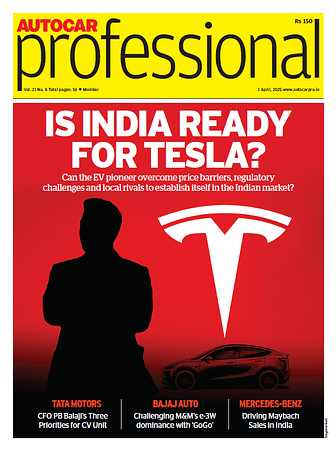ZF Introduces Optical Multi-Gigabit Ethernet for Vehicle Electrical Systems
New technology enables data transmission at rates up to 50 Gbit/s over distances of 40 meters, supporting next-generation software-defined vehicles.
Technology company ZF has developed its ProAI high-performance computer to work with optical multi-gigabit Ethernet for automotive applications, bringing fiber optic technology to vehicle electrical systems. The advancement, which uses newly developed chips and connectors, enables data transmission via automotive-grade optical fibers according to the IEEE 802.3cz-2023 standard and could enter series production as early as next year.
While fiber optic connectivity is widely used in home and office data networks for high-speed data transfer, it is only now gaining traction in the automotive sector. "This ultra-fast transmission is a key technology for future vehicle electrical systems of software-defined vehicles," said Oliver Briemle, head of Cross-Domain Computing at ZF.
The technology supports data transfer rates of 2.5 Gbit/s to 50 Gbit/s and enables transmissions over distances up to 40 meters, making it suitable for various vehicle types including cars, trucks, buses, and shuttles. Intensive testing has confirmed the technology's robustness under various operating conditions.
According to ZF, the optical multi-gigabit Ethernet offers several significant advantages over traditional copper-based systems:
- Weight reduction compared to copper cables, helping to decrease fleet fuel consumption
- Improved reliability as optical fibers are not susceptible to electromagnetic interference
- Higher energy efficiency, requiring less power for data transmission
- Scalability for future upgrades without changing existing optical cabling components
- Cost savings due to high production volumes of the required components
- Enhanced communication channels with lower equalization complexity and power consumption
The technology is particularly valuable for applications requiring high data transfer rates, such as autonomous driving systems, infotainment, and networked services. In passenger cars, it can efficiently network central computers with ADAS sensors and infotainment systems, while in commercial vehicles like articulated buses, it allows networking of components over distances up to 40 meters.
RELATED ARTICLES
Blacked-Out and Bold: SUVs Between ₹15–30 Lakh Sporting the Dark Edition Look
Mahindra Scorpio Classic Boss Edition to the Jeep Compass Blackshark – know all about the blacked-out versions of these ...
Volkswagen India Plans Diverse Powertrain Portfolio to Stay Relevant in Market
Volkswagen has electric models ready globally, but the company is closely watching India’s EV policy framework and tarif...
Marelli Showcases Software-Defined Vehicle Solutions at Auto Shanghai 2025 with New ProZone Unit
Marelli introduces its ProZone zone control unit at Auto Shanghai 2025, highlighting advancements in software-defined ve...






 By Shruti Shiraguppi
By Shruti Shiraguppi
 04 Apr 2025
04 Apr 2025
 2923 Views
2923 Views





 Autocar India
Autocar India


 Darshan Nakhwa
Darshan Nakhwa

 Sarthak Mahajan
Sarthak Mahajan

